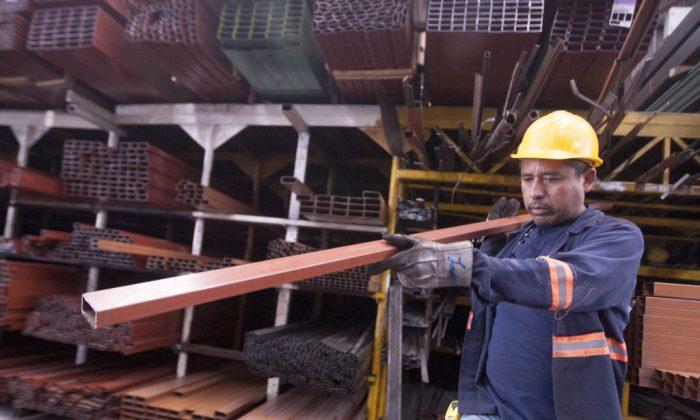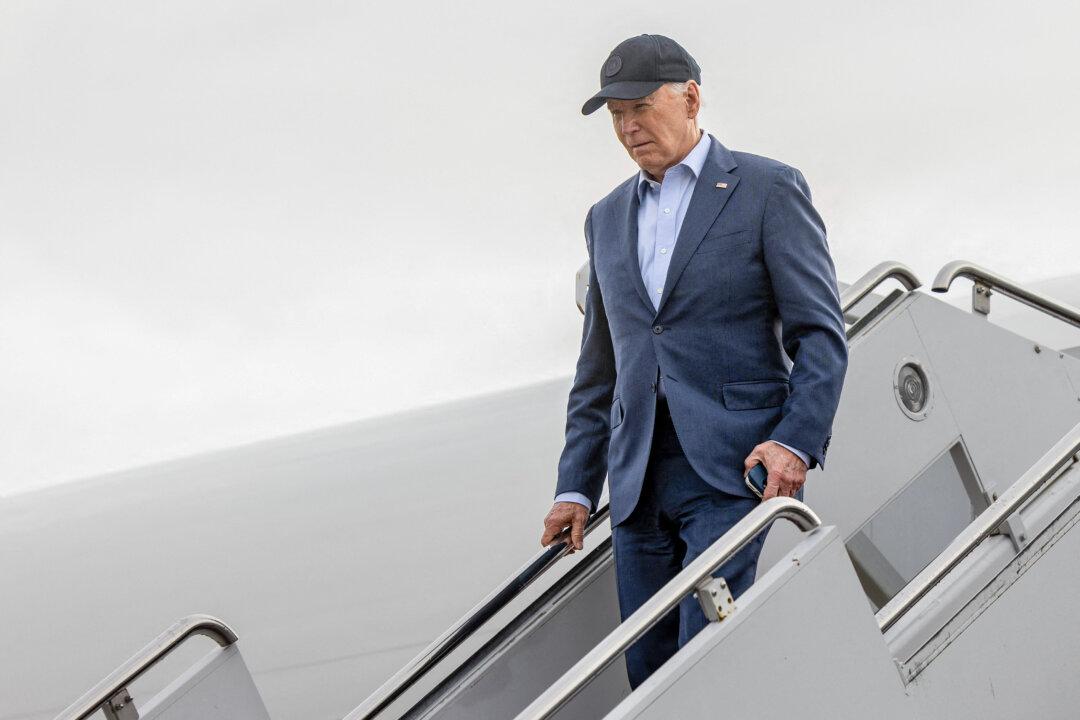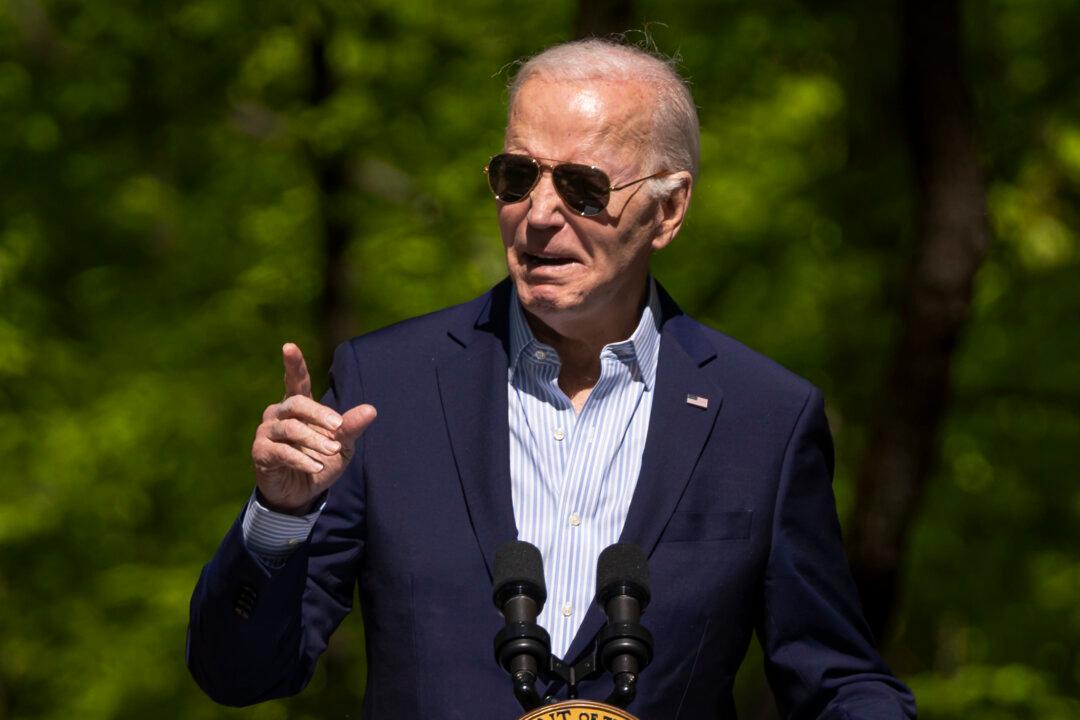WASHINGTON—President Donald Trump agreed to lift U.S. tariffs on steel and aluminum from Canada and Mexico, removing a key obstacle for the approval of the revamped North American Free Trade Agreement (NAFTA) in the Republican-controlled Senate. The new pact, however, still faces challenges in Democratic House.
The United States announced May 17 that it would remove the Section 232 tariffs for steel and aluminum imports from Canada and Mexico that were implemented in 2018. In response, both countries agreed to remove tit-for-tat tariffs they imposed on a variety of U.S. goods.
The Trump administration’s decision to lift the tariffs will clear a major obstacle for Congress to approve the U.S.–Mexico–Canada trade agreement (USMCA), according to Bruce Heyman, former U.S. ambassador to Canada and author of “The Art of Diplomacy.”
“Two of the three impediments to getting USMCA done have been cleared,” he said.
One of the impediments, Heyman said, was getting key Republican senators including Senate Finance Committee Chairman Chuck Grassley (R-Iowa) on board with the president.
Grassley, who had been a vocal opponent of the metal tariffs on Canada and Mexico, applauded Trump’s decision, saying “the biggest hurdle to ratifying USMCA has been lifted.”
In addition, tariffs were a major irritant for Ottawa. Hence the Trump administration’s move would help remove a key hurdle to getting the trade pact ratified in Canada, Heyman said.
The Canadian Parliament may approve the deal as early as next month, he added.
In November 2018, the leaders of the United States, Canada, and Mexico signed the USMCA, replacing NAFTA, now more than two decades old. The new pact still needs to be ratified by legislatures in all three countries to take effect.
Trump’s decision to lift tariffs was also welcome news for U.S. farmers who have been hit by retaliatory tariffs.
“Starting Monday, our great Farmers can begin doing business again with Mexico and Canada,” Trump wrote in a tweet on May 20. “They have both taken the tariff penalties off of your great agricultural product. Please be sure that you are treated fairly.”
The Trump administration now has to work with House Democrats to resolve other issues raised with respect to the agreement.
The Remaining Hurdle
Democrats, who control the House, have indicated they were not satisfied with the USMCA, calling for stronger enforcement provisions for labor standards. They also want changes to the agreement’s environment and prescription drug provisions.House Speaker Nancy Pelosi (D-Calif.) raised concerns about Mexico’s ability to deliver on labor commitments and asked the Trump administration to make changes to the agreement.
Asked at a Washington Post event about how far away a House vote on USMCA was, Pelosi said they were far away. According to Democrats, labor provisions in the agreement and reform legislation wouldn’t do enough to improve labor standards in Mexico.
Economist and former Trump campaign adviser Stephen Moore believes Pelosi will stand in the way to prevent Trump from getting a political victory.
“Of course she doesn’t want [the deal approved],” he told The Epoch Times, adding that she led the resistance movement.
“That means anything Trump wants to do, they’re just against it. Whether it’s good for the economy or not.”
A top Mexican official delivered an ultimatum to Democrats, saying Mexico wouldn’t consider any revision to the USMCA, according to a Politico article.
Sweeping Labor Reform
As part of the USMCA agreement, Mexico passed sweeping labor reform legislation in April that overhauls the country’s labor union structure.In a statement, U.S. Trade Representative (USTR) Robert Lighthizer applauded the Mexican Congress and President Andrés Manuel López Obrador for passing the reform bill, calling it “historic.”
“These reforms will greatly improve Mexico’s system of labor justice and are exactly what labor leaders in the United States and Mexico have sought for decades,” he said.
According to the USTR, one of the big problems with NAFTA was that it encouraged outsourcing from companies that were relocating their production to Mexico to take advantage of the country’s “antiquated” labor laws.
“There was no opportunity for the workers to ever vote on the [labor] agreement and no meaningful union democracy. That’s all changing,” a senior USTR official told reporters on April 19.
The legislation aims to prevent employers from corruptly influencing union elections. It requires workers to have secret ballot votes on both new and existing collective bargaining agreements.
“This is a major game-changing event in Mexico,” the official said.
The labor provisions of USMCA will make U.S. and Canadian workers more competitive vis-a-vis Mexican workers, according to experts. The agreement incentivizes the use of high-wage labor in auto manufacturing, requiring 40 percent of each car and 45 percent of each truck to be made by workers earning at least $16 an hour.
According to an analysis by the USTR, the new pact is expected to boost automotive manufacturing investments in the United States by $34 billion over the next five years. The deal will also provide $23 billion in additional annual sales of U.S. made automotive parts and nearly 76,000 new U.S. jobs in the automotive sector over a five-year period.
The USTR’s analysis is based largely on information collected from North American automakers as an indication of what manufacturers need to do in order to comply with the new rules of origin under the agreement.
The new trade pact will raise the United States’ real gross domestic product by $68.2 billion, or 0.35 percent, and create 176,000 new jobs, according to a separate analysis released in April by the U.S. International Trade Commission.






Friends Read Free